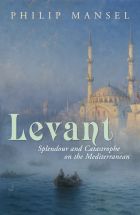Buy or gift a stand-alone digital subscription and get unlimited access to dozens of back issues for just £18.99 / $18.99 a year.
Please register at www.exacteditions.com/digital/cornucopia with your subscriber account number or contact subscriptions@cornucopia.net
Buy a digital subscription Go to the Digital EditionIn the early nineteenth century the redoubtable Englishman John Barker built a country retreat in the province of Hatay, close to the present-day Syrian border, planting his estate with exotic fruit trees, watching over the British Empire’s Indian Mail, and entertaining guests with music on the mechanical organ. David Morray looks back on the golden age of ‘Suedia Hall’
A nineteenth-century Englishman visiting John Barker’s country estate in the Turkish province of Hatay (then part of Ottoman Syria), records feeling, for a few hours at least, as though he had suddenly been transported back to Regency England. “The evening at the villa was in keeping with the day – the society of Mr Barker, his lady and family – several airs of Rossini and Mozart were given in beautiful style on the piano, the first and last time that we heard them during the journey: and when listening to the din of Turkish pipes and flagelots, or rude Arab guitars, we often thought of the melodies of that night in the Syrian villa.”
This appreciative guest was the traveller and author John Carne, whose account of his travels, first published in 1836, is best known for its illustrations by William Bartlett, the topographical draughtsman.
Bibliography and further reading:
John Carne: Syria, The Holy Land. Asia Minor, &c. London 1836–38
Frederick Arthur Neale: Eight Years in Syria, Palestine and Asia Minor from 1842 to 1850. London 1851.
The traditional tent of Central Asian nomads is a pleasure dome fit for the gods, says Tim Beddow
Hekimbaşı Salih Efendi was the last Chief Physician to the Ottoman court, a scholar and a reformer. But plants were his passion. His gardens have gone, but the house lives on. By Patricia Daunt. Photographs: Simon Upton
The Victorian painter Frederick Leighton went to extraordinary lengths to create his pink, black, blue and gold domed Arab Hall in London. By Caroline Juler with photographs by Fritz von der Schulenburg
Süleyman the Magnificent’s city within a city above the Golden Horn has come to house one of the world’s finest collections of books and ancient manuscripts.
When the intrepid Lady Mary Wortley Montagu travelled with her husband’s embassy to Turkey in 1716, she recorded the minutiae of life on the road and in her ‘new world’. . Remarkably open-minded, her innocent observations inspired Ingres to paint some of the greatest erotic masterpieces of the Romantic movement.
‘There are not so many places left where magic reigns without interruption,’ wrote Freya Stark in The Lycian Shore, ‘and of all those I know, the coast of Lycia was the most magical.’ Barnaby Rogerson went with Rose Baring and four-month-old Molly in search of enchantment. Photographs by Faruk Akbas
Its rich, subtle flavour lends itself to a multitude of melting concoctions. Berrin Torolsan traces the story of this most lustrous fruit and serves up an irresistible feast.
More cookery features
From the art capitals of the world, a round-up of Islamic and Orientalist art






Cornucopia works in partnership with the digital publishing platform Exact Editions to offer individual and institutional subscribers unlimited access to a searchable archive of fascinating back issues and every newly published issue. The digital edition of Cornucopia is available cross-platform on web, iOS and Android and offers a comprehensive search function, allowing the title’s cultural content to be delved into at the touch of a button.
Digital Subscription: £18.99 / $18.99 (1 year)
Subscribe now